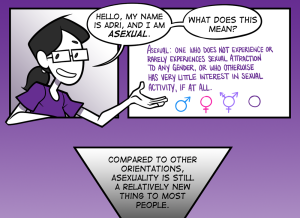We have a women’s leadership problem.
Across sectors, across economies, and across areas of interest, women are underrepresented in leadership.
In the United States alone, a dearth of women in leadership positions persists from the corporate world through the nonprofit sector:
Among Fortune 500 companies, women are only 5.2% of CEOs and 17% of board members. Among Fortune 1000 companies, women are still only 5.4% of CEOs – and 8.1% of top earners.
Women won in record numbers in the 2014 midterm elections, but still only 20% of the Senate and 19% of the House are women. At the state level, only 24.2% of legislators are women – and only five women are governors.
Only 16% of directors, executive producers and producers, writers, cinematographers, and editors of top-growing domestic films are women – and only 28% of off-screen talent in broadcast television are women.
Women are only 30% of physicians, 13% of engineers, and 9% of management and 14% of senior management positions in IT.
Women make up only 21% of nonprofit leaders, despite 75% of the sector being comprised of women workers.
This only gets worse when you look for women who live at the intersections of oppression in positions of power. Women of color make up only 11.9% of managerial and professional positions in the country, with Latina women filling 3.9% and African-American women 5.3%. Only 2.7% of Asian women fill those high-ranking positions.
And around the world, those numbers don’t always get better.
Although some nations boast truly gender-diverse corporate sectors and governments, most women worldwide find themselves lower down on the career ladder than their male counterparts.
The numbers of women in government positions, for example, are devastatingly low worldwide: They constitute only 22% of parliamentary positions, 11 heads of state, 13 heads of government, and 17% of government ministers.
Unfortunately, a lot of cultural conversations around women’s leadership don’t encompass solutions to these gaps. Instead, our discourse seems to be centered around why women don’t lead, rather than how we can make sure women have the chance to do so. And that’s a huge difference.
Some women can’t conceive of themselves as leaders because they’ve been socialized to see themselves, instead, as subordinate or less effective than men.
Some women, despite success, still doubt their own abilities in a world that is seemingly out to crush their self-esteem.
But that isn’t all that’s holding women back – and myths around women’s leadership don’t do enough to address the rest.
The widespread notions about why women don’t lead prevent us from formulating solutions to the gender leadership gaps in different industries, and we need to break out of familiar conversations in order to focus on how to improve the numbers we saw earlier.
The following three myths about women leaders are common, but dead wrong – and we need to get past them in order to see the real gender politics at play in our workplaces.
Myth #1: Women Don’t Pursue Leadership Because They Don’t Want the Work
A lot of folks think that the reason women aren’t taking up more space in executive suites and high-powered political spaces is simply because they don’t want to.
It’s an easy assumption to make – unless you’re aware of how gender shapes that perception.
It’s sometimes true that women turn down more involved and high-ranking positions because of their families or their personal desires. After all, men do that sometimes, too. It’s okay for professionals of all genders to choose the career paths that speak to them, even if that doesn’t mean shooting for the C-Suite.
But for women, juggling responsibilities at home and at work isn’t always about choice. A lot of times, the invisible labor they’re expected to do disproportionately to men, and the cultural expectation that they should be happy doing it holds them back.
Despite a growing consciousness about gender and privilege, women are still doing most of the unpaid labor at home.
They’re still raising the kids en masse, spending more time preparing meals and cleaning the house, and managing household budgets and operations more than their male partners. In fact, women do more housework than men even when those men are unemployed.
And there’s still a lack of support networks in place for women without partners or in queer partnerships to ease the responsibilities of managing a house without incurring extra costs or social stigma.
Work cultures, too, haven’t shifted much along the lines of gender expectations.
Our idea of “professionalism” is still one that idealizes white maleness above all, and that pushes women out of opportunities to lead and take charge as employees.
But blatant sexism also pushes women out – because although most women report working twice as hard as men just to be seen as their equals at work, they’re also more likely to undervalue their own contributions or be undervalued because of gender bias and socialization.
When we say that women don’t want leadership positions, what we’re really saying is that we don’t see women as leaders.
That’s something all of need to unlearn.
Myth #2: There Aren’t Enough Women in the Workforce to Create Gender Parity in Higher Ranks
Although women remain underrepresented in some fields, their presence in various sectors has boomed in the last few decades. But the number of women leaders in those industries hasn’t kept up.
Women make 54.2% of the finance industry and 83.4% of the healthcare and social assistance industries, but fewer than 3% of management and administration CEOs are women. (Additionally, it’s estimated that only 3% of incoming healthcare http://www.beckershospitalreview.com/hospital-management-administration/fewer-than-3-of-incoming-ceos-are-women.html
Women are 45.4% of law associates, but only 25% of non-equity and 15% of equity partners. Women are 55% of managerial and professional staff, but only 22% of senior managers.
If it’s a numbers game determining who is in charge, the math is off.
57% of women in the US are members of the labor force, and they make up 47% of it altogether.
Women aren’t a smaller percentage of leaders because they’re a smaller percentage of the workforce, but rather because gender bias prevents them from taking the lead in their sectors.
A majority of high-ranking women in the corporate world are in positions that don’t lead to CEO – and under 20% of the folks reporting directly to CEOs are women.
That’s because women are more likely to be hired in operational and support roles, in line with gender expectations that paint them as nurturing and maternal.
Data shows that when one woman does make the jump to executive leadership, the other women at an organization will likely suffer from her filling an “implicit quota” – and become 51% less likely to advance.
That’s because corporations often see hiring women as something to do in order to fulfill diversity requirements, versus a natural option when they’re going through hiring proceedings.
Companies might also explicitly leave women out when they’re internally or externally recruiting for positions because of sexist beliefs about how those women will advance.
Managers still worry – now, in 2015 – that women will unexpectedly depart from high-powered positions in order to devote themselves to household priorities, and they still rely on gendered understandings of how women work and what they’re interested in to formulate their idea of the ideal candidate for a specific position.
That means they aren’t thinking of women when they’re wondering who to promote to a grueling finance position, and they’re not looking for women when they’re seeking out applicants for tech jobs.
For women entrepreneurs, gender bias holds them back from launching their dream businesses – and from remaining at the helm.
Seven women are starting businesses for every ten men who do the same, but women are likely to give men visible leadership positions in order to secure funding.
That’s because less than 5% of ventures receiving capital have women on their executive teams, and women CEOs receive only 3% of all venture distributed. In a country where 30% of business owners are women, those numbers can’t be pure coincidence.
It isn’t going to take floods of women – or more floods of women – entering these fields to diversify their leadership. It’s going to require top-down changes in how positions are filled and structured.
Myth #3: Women Leaders Aren’t as Effective as Men
Our culture posits men as natural-born leaders and more effective managers and thinkers, but evidence shows that those gender stereotypes (surprise!) aren’t true.
If data on women’s leadership was what drove the application processes for high-ranking positions in various fields, more women would be in charge. Statistics show that women make excellent leaders and that their leadership drives fantastic results.
One of the most comprehensive, worldwide studies on corporate success in 2014 found that businesses with women employed at various levels of leadership – and in higher numbers – outperformed their competitors financially, and that companies that put fewer women in power performed the worst
And time and time again, numbers have shown that women can and do lead organizations to new heights.
In addition, data also shows that women make more effective leaders than men.
Employees are more likely to call women leaders effective than they do men and rank their women supervisors as broadly competent. We also know that for women, perceived effectiveness actually increases with age, perhaps because women are less likely than men to rest on their professional laurels.
Women’s leadership – and, more broadly, feminist leadership – is transformative. And at the very least, it’s competitive with men’s leadership. There’s no proof out there that men are innately more fit to lead, or that women are less so.
Women in every field undoubtedly have the experience, drive, and passion to succeed as leaders – and a shot at doing so could help their organizations grow.
***
Women’s leadership matters.
In a society where many women are working hard every day, it’s unfair that so few are given chances to really prove what they’re made of – or take the lead and put their ideas into action.
It’s not right that gender biases and a dearth of women leaders leave ambitious women employees out of the count for promotions and new career opportunities, and it’s not okay that despite data showing the value of women’s leadership they’re still so often passed up for men in searches for high-ranking workers.
And that’s why it’s time for us to lay these myths to rest.
It’s pure fact that women are underrepresented in leadership positions in federal, state, and local government; the nonprofit sector; commercial enterprises; tech and web fields; and even legal and medical professions.
But it doesn’t have to be that way.
We can embrace women as leaders and allow those with the drive to do so climb ladders to positions of power. We can set up strategic policy initiatives and programs to help women leaders flourish. And we can even change the dialogue on women’s leadership and gender at work.
But first, we need to come clean about what’s holding women back.
It isn’t that women innately want to stay home and sacrifice their careers. It isn’t that women are ill-equipped to fill high-ranking positions. It isn’t that there aren’t enough women in any field at any given time to give them the opportunity to lead.
The reason there aren’t more women leaders is because gender still holds women back at work.
And until we confront that truth head-on, the numbers aren’t going to change.
[do_widget id=’text-101′]
Carmen Rios is a Contributing Writer for Everyday Feminism. She splits her time disparately between feminist rabble-rousing, writing, public speaking, and flower-picking. A professional feminist by day and overemotional writer by night, Carmen is currently Communications Coordinator at the Feminist Majority Foundation and the Feminism and Community Editor at Autostraddle. You can follow her on Twitter @carmenriosss and Tumblr to learn more about her feelings.
Search our 3000+ articles!
Read our articles about:
Our online racial justice training
Used by hundreds of universities, non-profits, and businesses.
Click to learn more





















